In Venice there is a small island, Lazaretto Vecchio, which has a rectangular shape and is densely built up with ancient buildings. For many years, from 1348 to 1630, it was used as a sanatorium for people suffering from the plague. Then the island was abandoned, and only at the beginning of the 21st century did archaeologists begin to conduct excavations there. While working, they discovered many skeletons of plague victims on the island – the disease claimed many lives especially in 1576. Scientists have found bricks in the mouths of some people. Probably, people of those times believed that some of the dead were vampires and fed on the flesh of other dead people. Recently, scientists studied one of the skulls and were able to recreate the face of a “16th century vampire.” You must see this!
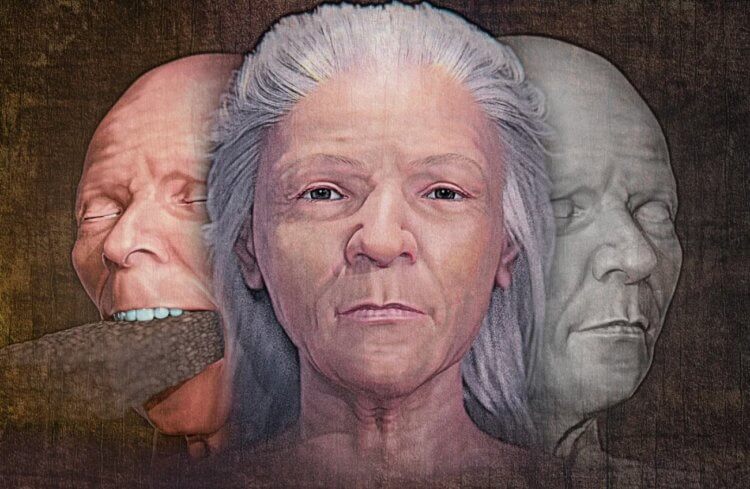
The woman who was considered a vampire in the 16th century looked something like this. Image: IFL Science
Interesting fact: The island of Lazaretto Vecchio gave rise to the word “infirmary” that exists in many languages of the world. This is the name of a special place for caring people who may be infected with any disease.
Contents
- 1 How legends about vampires appeared
- 2 How scientists found the skeleton of an ancient vampire
- 3 What vampires looked like in ancient times
- 4 Is it true that vampires exist
How did legends about vampires appear
According to IFL Science, during the burial of people who died from the plague, Italian gravediggers spread many rumors about vampires. At that time, the image of a vampire in a cloak and two sharp fangs did not yet exist – it was created by the Irish writer Bram Stoker in the novel “Dracula” only in 1897.
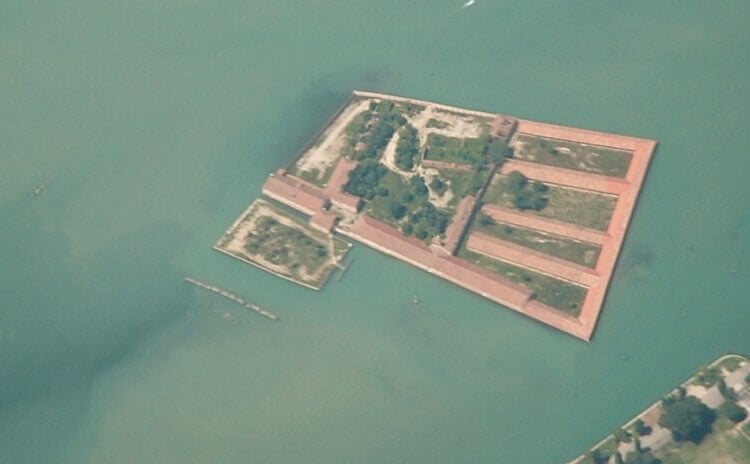
Lazaretto Vecchio Island from a bird's eye view. Photo: Wikipedia, Chris 73
In the minds of gravediggers, vampires were the dead who came to life in mass graves and fed on decaying corpses. They considered those corpses that were most swollen due to bodily fluids to be bloodsuckers. Blood oozed from the mouths and noses of some of the dead, which is why it was assumed that they ate other bodies.

In general, the image of a vampire in the 16th century was not as romantic as it is now. Image: ondacero.es
Many plague victims were covered with ashroud during funerals – this is a cloth that is laid on the surface of the body of the deceased. Sometimes the material decomposed very quickly, and gravediggers assumed that vampires also eat the fabric.
Read also:Who is Vlad the Impaler and why did he become the prototype for the vampire Count Dracula
< h2>How scientists found the skeleton of an ancient vampire
During excavations in 2006, scientists discovered the skeleton of such a vampire. There was an impressively sized brick in his mouth. Most likely, the gravediggers inserted it so that the bloodsucker could not feed on other dead people.
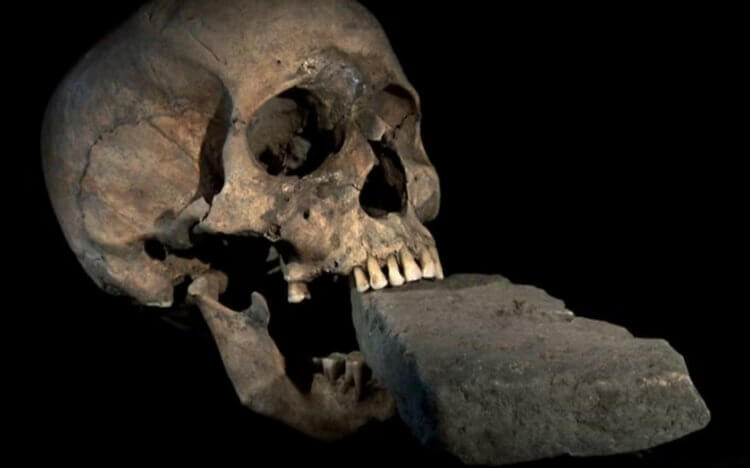
Found skull with a brick in its mouth. Image: National Geographic
The analysis showed that the body belonged to a woman aged about 60 years. During her life, she mainly ate vegetables and grains – such a diet hinted that she was not rich and belonged to a low social stratum of society.
You may be interested:In an Argentine cave bones of a giant vampire bat found
What vampires looked like in ancient times
Recently, forensic expert and part-time 3D designer Cicero Moraes decided to recreate the appearance of this vampire woman. To do this, he first drew a front and side view of her skull. He then used the data from the CT scanner to create a 3D model. Special programs helped him “stretch” realistic skin onto the model, and you can see the result of his work in the image below.

Appearance of a female vampire from Lazaretto Vecchio. Image: ortogonline.com
In addition to this, Cicero Moraes created a copy of the foam brick found in the woman’s mouth. Then he conducted several experiments to see if it could fit in a woman's mouth. The results showed that, indeed, the stone was difficult, but could easily fit between the teeth of the “vampire” and not even damage her teeth and soft tissues.
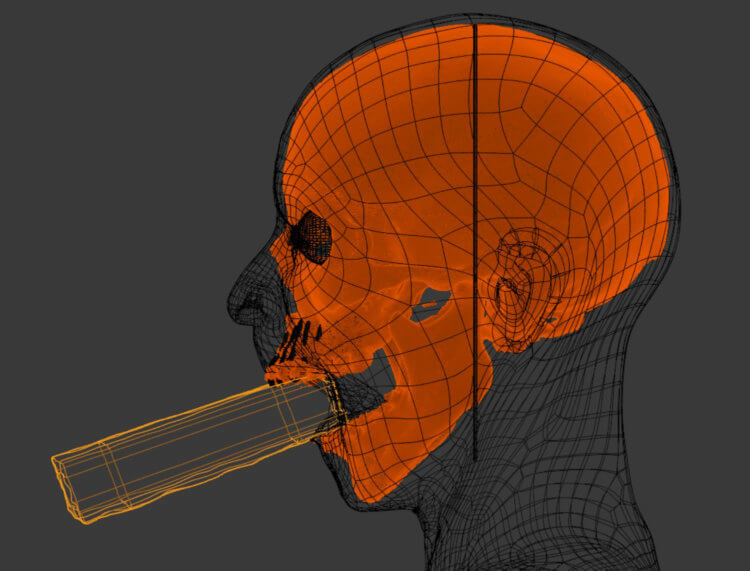
The brick fit exactly in the mouth of the woman who was considered a vampire. Image: ortogonline.com
But how exactly the brick ended up in her mouth, scientists still don’t know. Yes, with a high degree of probability, it was inserted by the gravediggers, fearing her resurrection. But there is also a version that the brick ended up there by accident. Which version do you believe? Write in our Telegram chat.
An interesting discovery:Vampire bats love to have dinner with friends
Is it true that vampires exist
Archaeologists often find skeletons of people who were considered vampires in ancient times. Usually they were buried with stakes in the heart area or their bodies were completely nailed to the ground. In 2022, the body of one vampire was found in the Polish city of Bydgoszcz – a sickle was pressed against the woman’s neck after death. Apparently, the Polish gravediggers believed that if the vampire tried to get up, the grain harvesting tool would cut her neck. If you are interested, be sure to read our material “The skeleton of a “vampire” that terrified people was found in Poland.”
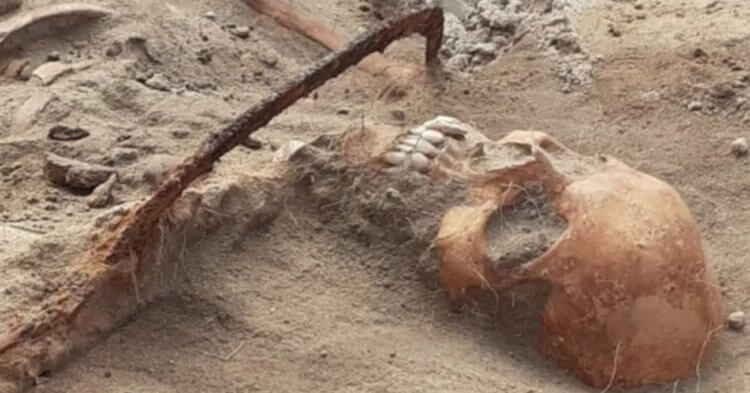
Skeleton of a “vampire” found in Poland. Image: CNN Brasil
Have you already subscribed to our Zen and Telegram channels? It's time to do it!
It goes without saying that vampires do not exist. Despite the fact that one liter of human blood contains about 700 kilocalories, people cannot eat it. This is due at least to the fact that the blood of all mammals is rich in iron. If it is in excess, a person will quickly develop a disease, which is accompanied by weakness, heart failure and even the accumulation of fluid in the lungs. For details, go to our article “Can a person become a vampire and feed on blood?”